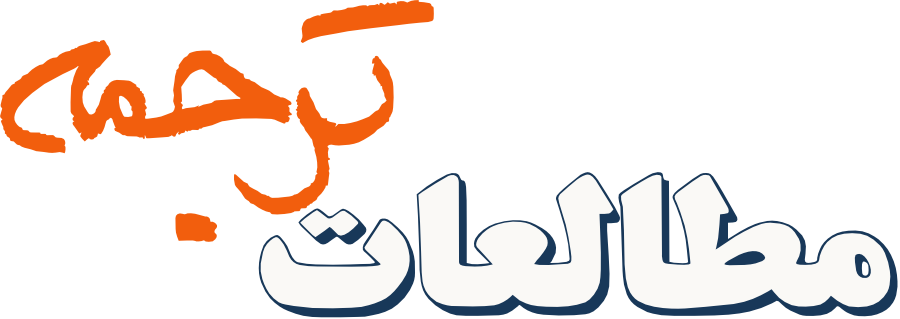«توصیه میکنم ترجمة من از این رشته توییت را بخوانید»
توییتر و مداخلههای پیرامتنی مترجم مطبوعاتی
چکیده
مترجم-خبرنگاران، خبرنگارانی که ترجمه را بهصورت فعالانه در شغل خود به کار میگیرند، استفاده روزافزونی از رسانههای اجتماعی برای نشر محتوا، تعامل با مخاطب و تثبیت جایگاه خودشان به عنوان کارشناس میکنند. پژوهش حاضر با بررسی مداخلههای پیرامتنی مترجم-خبرنگاران در رسانه اجتماعی توییتر، نگاهی ویژه به فرم و کارکرد این مداخلهها میاندازد. نتایج این پژوهش آشکارکننده فرمهای مختلف پیرامتنی از قبیل: ترجمه گزیدهای از متن اصلی به همراه لینک به متن مبدأ، ترجمه و بافتاردهی برای درک متن اصلی، و دعوت مخاطب به خواندن ترجمه است. با بررسی انواع فرمها، این پژوهش ماهیت چندوجهی پیرامتنها در فضای ترجمه مطبوعاتی در توییتر را نشان میدهد.
این پژوهش همچنین بر اساس مدلهای موجود به بررسی کارکرد این پیرامتنها میپردازد. یافتههای پژوهش نشان میدهد که پیرامتنهای مترجم-خبرنگار میتواند کارکردهای متنوعی از قبیل ارجاعی، هرمنوتیک، اجتماعسازی یا تجاری داشته باشد. این پژوهش همچنین بر اهمیت نقش رسانههای اجتماعی مانند توییتر در گسترش حوزه کاری مترجم-خبرنگاران، و نیز کنشهای پیرامتنی و عاملیت آنها تأکید میکند. همچنین با تأکید بر نیاز به تحقیقات اکتشافی بیشتر در این حوزة در حال توسعه، بر اهمیت بالقوه یافتههای عمیقتر پژوهشهای آینده در زمینه تعامل میان مترجم-خبرنگاران و مخاطبان آنها و پیرامتنهای برساخته آنها در شبکههای اجتماعی تأکید میکند.
مراجع
Ahmadi, S. & Parham, F. (2022). Features of identity in translational and non-translational children’s literature. Language and Translation Studies, 55(3), 121–153.
Arabbeigi, F. (2021). Translational problems and use of digital resources: A process-oriented comparative study of professional vs. non-professional translators (Unpublished master’s thesis). Allameh Tabataba’i University.
Farahzad, F. & Ehteshami, S. (2011). Identity in translation. Iranian Journal of Translation Studies, 9(35), 45–56.
Ganji, N. (2024). The analysis of the relationship between editing styles and translation process through electroencephalography (Unpublished master’s thesis). Allameh Tabataba’i University.
Hvelplund, K. T. (2011). Allocation of cognitive resources in translation: An eye-tracking and key-logging study (Unpublished doctoral dissertation). Copenhagen Business School.
Jakobsen, A. L. (2017). Translation Process process Researchresearch. In J. W. Schwieter, & A. Ferreira (Eds.), The handbook of translation and cognition (pp. 21–49). Wiley Blackwell.
Laver, J., & Mason, I. (2018). A dictionary of translation and interpreting. Retrieved from http://fit-europe-rc.org/wp-content/uploads/2019/05/Dictionary-of-translation-and-interpreting-Mason-Laver.pdf
Marzani, F. Z. (2020). Simultaneous interpreting: A cognitive exploration using EEG and fMRI (Unpublished master’s thesis). Allameh Tabataba’i University.
Mousavi Razavi, M. S., & Allahdaneh, B. (2018). Cultural elements in the English translations of the Iranian resistance literature: A textual, paratextual, and semiotic analysis. Journal of Language and Translation, 8(1), 15–30.
Mousavi Razavi, M. S., & Mashaei, M. (2021). Manipulation in Persian translations of contemporary English novels: A corpus-based study. Research in Contemporary World Literature, 25(2), 665–690.
Mousavi Razavi, M. S., & Rad, A. (2019). Representation of anthropomorphic and non-anthropomorphic perceptions of God in English and Persian translations of the Holy Quran: A case study of “Yad [Hand]” and “Sāgh [Shin]”. Translation Studies of Quran and Hadith, 5(10), 181–215.
Nejati, V. (2013). Cognitive abilities questionnaire: Development and evaluation of psychometric properties. Advances in Cognitive Science, 15(2), 11–19.
Parham, F. & Marzani, F. Z. (2022). Employability of fMRI technique for the study of simultaneous interpreting process. In F. Parham (Ed.), Book of abstracts: The 1st RITS biennial international conference: Cutting-edge trends in translation and interpreting (p. 11). Research Institute for Translation Studies.
Parham, F. (2019). National identity in Persian translated immigrant literature. In L. Barciński (Ed.), National identity in literary translation (pp. 193–201). Peter Lang.
Rastegar, Y., & Rabani, A. (2013). An analysis of national identity and its sextet dimensions in Isfahan City. Jouranl of Applied Sociology, 24(2), 1–20.
Risku, H. (2014). Translation process research as interaction research: From mental to socio-cognitive processes. MonTI special issue: Minding Translation, 331–353.
Rojo, A. (2015). Translation meets cognitive science: The imprint of translation on cognitive processing. Multilingua, 34( [6)], 721–746.
Rojo, A. & Ramos, M. (2014). The impact of translator’s ideology on the translation process: A reaction time experiment. MonTI Special issue: Minding translation, 247–271.
Tymoczko, M. (2003). Ideology and the position of the translator: In what sense is a translator “In between”? In M. Calzada Perez (Ed.), Apropos of ideology: Translation studies on ideology-ideologies in translation studies (pp. 181–201). St. Jerome.
Tymoczko, M. (2007). Enlarging translation, empowering translators. Routledge.
Van Dijk, T. A. (1995). Discourse analysis as ideology analysis. In C. Schäffner & A. L. Wenden (Eds.), Language and peace (pp. 17–33). Dartmouth.
Van Dijk, T. A. (1998). Ideology. A multidisciplinary approach. Sage.
Van Dijk, T. A. (1998). Opinions and ideologies in the press. In A. Bell, & P. Garrett (Eds.), Approaches to media discourse (pp. 21–63). Blackwell.
Venuti, L. (1999). The translator’s invisibility. Taylor & Francis.
Vieira, L. N. (2016). Cognitive effort in post-editing of machine translation: Evidence from eye movements, subjective ratings, and think-aloud protocols. UK: Newcastle University. Retrieved from http://hdl.handle.net/10443/3130
Wodak, R. (2002). Aspects of critical discourse analysis. Zeitschrift fur Angewandte Linguistik, 36(10), 5–31.
Downloads
چاپشده
Versions
- 2024-05-11 (2)
- 2024-05-11 (1)
ارجاع به مقاله
شماره
نوع مقاله
DOR
مجوز
حق نشر 2024 Ali Attaran, Farzaneh Farahzad

این پروژه تحت مجوز بین المللی Creative Commons Attribution-NonCommercial 4.0 می باشد.
Copyright Licensee: Iranian Journal of Translation Studies. This article is an open access article distributed under the terms and conditions of the Creative Commons Attribution–NonCommercial 4.0 International (CC BY-NC 4.0 license).





